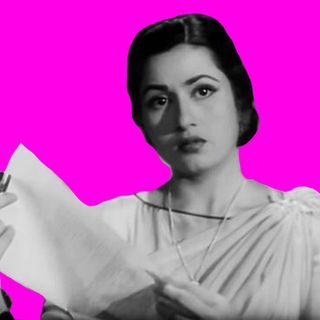
Is This Normal? ‘Dancing Alone At Home Makes Me Happy’
Dancing alone in the safe space of one’s home affords one with a unique opportunity for self-expression, away from the public gaze,

In this series, we dig into our strange phobias, fixations, and neuroses, and ask ourselves — Is This Normal?
I’m not the most comfortable dancing in public. I don’t hate dancing, per se; it’s just the prospect of moving my limbs about, under external gaze, that makes me a tad uneasy and prevents me from fully “letting go.” While I still do crave to go out dancing every once in a (long) while, the experience doesn’t nearly match up to the joy of dancing by myself, alone at home. The solitude is integral to the bliss; affording me the undulterated joy of dancing in my safe space, uninhibited, without having to wonder if I look weird while I’m at it.
Is this normal? Turns out, kinda… “Tonight, while rewatching an old show, I heard this song that brought back a flood of memories… So, I switched over to YT, played the song, cranked it up, and just fu*king danced. YT autoplayed a mix of damn good songs from that era after that, all chock full of nostalgia, and I just kept dancing,” noted one Reddit user, a couple of years ago. Their post — titled, “I danced alone in my living room tonight and it felt really fu*king good” — garnered over 4,000 upvotes and hundreds of comments from netizens who could relate.
Dancing by ourselves in our safe spaces gives us the opportunity to experiment with different styles and movements without fear of criticism or scrutiny. Doing so also serves as a means to explore what we truly enjoy, away from the public eye. It can thus be empowering; dancing alone has the potential to imbue one’s outlook with a sense of autonomy and control over their bodies — translating, perhaps, into greater self-confidence and self-esteem.
“Dance is an antidote to stress, a way to combat negative emotions, an elixir for the body, mind, and brain,” co-wrote dancers-cum-neuroscientists Julia Christensen and Dong-Seon Chang in their 2021 book, Dancing Is the Best Medicine.
Related on The Swaddle:
Why Mindfulness During Sex Is Linked to Greater Satisfaction, More Orgasms
An article on Psychology Spot explains how moving rhythmically and expressively can lead to a positive shift in mood, by reducing stress hormones and activating the release of endorphins that trigger feelings of comfort, relaxation, fun, and even power. “Music and dance do[n’t just] activate the sensory and motor circuits of our brain, but also the pleasure centers… What’s more, as we move, our muscles relax to the music, which allows us to free ourselves of the tension built up during the day, especially the one accumulated in the deepest part of the musculature.”
Competitive dancing, however, doesn’t have nearly the same effect. “Specifically, the dancing we do as a hobby is the most healthy. Anything that is competitive puts stress hormones in the blood, and that down-regulates the immune system,” says Christensen, adding: “Competitive or professional dancers have high levels of cortisol, the stress hormone, on the day of a competition or performance. This is not healthy.”
When The Washington Post asked Christensen whether “scientifically speaking, dancing in our kitchens count,” her answer was an enthusiastic “Yes!” Christensen explained, “That’s probably the most pure form of dancing, because you can express yourself freely… That’s the self-expression that the arts give us, and that nothing else does.”
There’s another side to dancing alone that works wonders for neurodivergent people. To my social anxiety-ravaged brain — that also happens to be autistic, and consequently, has a poor sense of proprioception (“perception or awareness of the position and movement of the body”) that results in poor balance as well– this makes complete sense. Let alone competitively — dancing publicly, too, has me worry constantly about my moves. When I’m alone, though, it doesn’t matter whether I miss a beat, trip over my own feet, or have no sense of rhythm.
Related on The Swaddle:
Little Big Things: The 23‑Year‑Old Attempting to Become a Full‑Time Contemporary Dancer
Besides, as a neurodivergent person trying to navigate a society designed with neuroconforming individuals in mind, I mask whenever I’m out in public. And masking — a full-time job that involves keeping up the pretense of being someone I’m not — can take away from the joy of dancing when I’m out in public. But when I’m alone, I don’t have to worry about my mask slipping momentarily, accidentally; I can be fully present in my movements. And to make things even better, dancing alone allows me to simultaneously use it as a way to stim, which is short for “self-stimulating behavior” through repetitive movements and sounds that help many neurodivergent individuals regulate sensory inputs, regulate emotions, and distract themselves.
“[T]he way dance classes are structured left me feeling like dance was not for me. I experience difficulties with memorising sequences, reproducing movements performed by others, and coordinating my body in time and space. I felt like everyone else in the room had a superhuman ability to keep up with the class, while I got stuck and trailed behind,” writes Susanna Dye, a neurodivergent artist diagnosed with dyspraxia and dyslexia. “Questioning the need for dance to be virtuosic, we embraced what felt good rather than what looked good to an outside eye. By working with improvisation, we could move in response to sensory input, shifting between outward and inward focus… We embraced rhythm and repetition, which helped us to experience a sense of release and find flow… As such, the dancing itself became stimming: a way of moving that was responding to our need for sensory stimulation and self-regulation.”
Evidently, dancing alone at home provides a unique opportunity for self-expression, allowing people to freely explore their emotions and release pent-up feelings. The safe space of one’s own home further allows one to let go of inhibitions pertaining to social pressure and judgment. In doing so, it grants space for unbridled, spontaneous movement, enabling people to experience a sense of emotional liberation while connecting with their inner selves.
Devrupa Rakshit is an Associate Editor at The Swaddle. She is a lawyer by education, a poet by accident, a painter by shaukh, and autistic by birth. You can find her on Instagram @devruparakshit.
Related


The Indian Arranged Marriage System Publicly Updated Its Vocabulary, But Remains Prejudiced Privately
